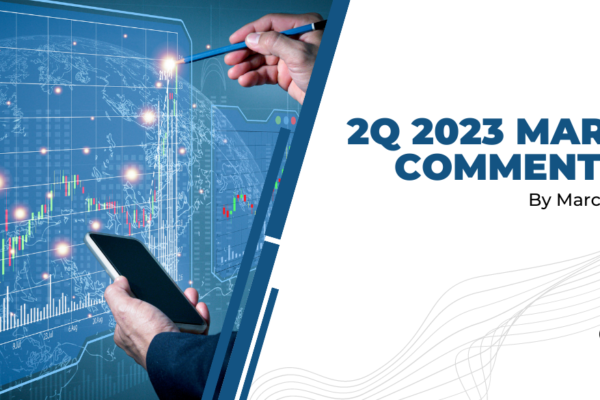3Q 2022 – Quarter 3 Commentary
What Happened:
- Q3 2022 offered a glimmer of hope for investors as it began with a double-digit market rally which abruptly ended mid-August and quickly reversed after another high CPI increase (8.3%) which shocked the markets. The fear of hawkish Fed and continued large interest rate hikes drove down equity and bond markets alike to new lows on the year.
- Year to date (as of 09/30/2022) the S&P 500 was down significantly on the year at -23.88%, the tech heavy NASDAQ -31.99%, & the DJIA -19.72%. International indexes did not fare any better than their domestic counter parts with MSCI EAFE -26.71%, and MSCI Emerging Markets -26.99%. For the year Value continues to hold up better than Growth, yet Q3 saw a stronger decline in Value, particularly in the small and midcap stocks.
- While it did not see the greatest loses of the indexes, perhaps the most damaging to investors was Fixed Income. Barclay Aggregate Bond was down -14.61%, not providing any real relief for investors, even though these assets are traditionally considered conservative and a safe haven.
- With the Fed Funds jumping to 3.25% (highest since 2008), from a mere 0.25% a year earlier, this pushed face values of Bonds significantly down. Yields on new issuances start to look attractive again. As of end of Q3, the 10-Year Treasury was near 3.8% and Investment-grade Corporate bonds at 5.3%.
- Q3 did offer some relief in energy, with Crude Oil dropping from $105 barrel the previous quarter to $79. While the price-per-barrel decrease would indicate that energy prices have trended lower, we must keep in mind that the US Government had released large quantities of its strategic reserves, bring reserves down to lows not seen since 1984. The strategy worked in this short run, subduing prices of gasoline at the pump during the quarter.
- The US dollar continued to gain strength throughout the quarter and was on it’s strongest run in two decades. The Euro was below par on the dollar an 18% gain from a year earlier. the British Pound was down to 1.12, a 21% gain. And the Japanese Yen was up to 144 for 1 US Dollar, a 30% gain in the same period. This Dollar strength is significant and adds real concerns about the outlook for Corporate earnings, with so many global companies in the US stock markets.
What we Did:
- In the Proxy Global Equity portfolio, we did not make any large shifts in the allocation, just minor rebalancing as deemed necessary during these periods of high volatility. From a top-down macro perspective, we remain with an overweight to US large Cap as well as a tilt towards Value. Our broad market hedges remained a higher cash balance, a small amount in TIPS and some gold exposure via ETFs. However, even gold prices, which had help up in the first half of the year, retreated from the prior quarter, with the spot price down 8% to $1662.40. Overall, the Global Equity strategy continued to outperform on our global index on the year. The strategy was roughly -23.6% at the end of the quarter with the bench market of MSCI ACWI at -25.3%.
- The Proxy Growth Portfolio continues to suffer on the downside as growth remains out of favor in Wall Street. As an unconstrained Multicap strategy, significant exposure to mid and small cap growth added to it’s underperformance. Sticking to our discipline, seeking long term aggressive growth, we have deployed capital from the strategy’s cash reserves in companies which we believe are trading at attractive prices relative to their potential earnings growth. Additionally, we continue to add to names that we have held over the years and view as even better opportunities at current prices. Examples of some new and current stocks where cash was invested are STEM, FFIV, NOW & MSFT. While we added to some stocks we held and liked more over the past quarter, we also reduced or eliminated exposure to companies we like less. Companies that might be longer term plays, and that are still a few years away from being profitable have been beat up the most in this risk off market, now providing more risk than upside. For our tax sensitive clients, we also viewed this as opportunity to realize losses in companies which may take longer to recover. As of the End of Q3 our Growth strategy was -36.2% with the NASDAQ at -31.99% and mid cap growth at -31.44%.
- Proxy’s value-oriented strategy, Dividend Income had held up well relative to the broad market but remained down double digits on the year. With Q3 showing us that Value would be excluded from the market sell off, we saw Large, Mid and Small cap all underperform their growth counterparts. Here we took advantage of what seemed to be relatively cheap stocks becoming even more attractive. As Value stock prices came down, dividend yields pushed higher. We deployed some of our strategic cash position in both new stocks and some current ones we liked even more. Example of such companies are IP, STLA, NYCB & GLPI. As of quarter end the Proxy Dividend Income strategy was -14.25%, outperforming the S&P 500 at -23.88%.
- Proxy’s fixed income portfolio continued to hold up better than the broad indexes over Q3 and on the year. The adjustments we made early in the year remained impactful, and we decided to make no other changes until we anticipate a market which will reward duration more than the current one. The Proxy Core Fixed Income Portfolio was -10.8% and the Proxy Low Duration strategy was -6.6%. While negative numbers like those might seems unappealing during normal fixed income markets, we remind our readers the Barclay’s Agg Bond Index is -14.6% in the same period. However, one plus to all this is that for individuals now starting to look for income, the average interest rates on bonds are much higher compared to 12 months prior. For example, the BBG BARC IG Corp index is 5.33% when just 12 months ago it was 1.6%.
What we are Watching:
- We will continue to keep a close eye on inflation and the actions taken by the Fed and other Global Central Banks. As the likelihood of a recession, however you might want to define it, seems quite high as a Hawkish Fed does all it can to cool the economy. The question will be how long and deep of a recession will we be facing? We will also continue to watch all the other factors directly related to these spikes in inflation, such as unemployment numbers, housing, energy, etc. As we know, the interest rate game takes time, and understanding when the Fed is doing too much too late, will be a big factor in how damaged the economy might become.
- As highlighted earlier, the US Dollar gained ever more strength over this past quarter, creating issues for companies that generate revenue globally. We will be watching to see how this historic correlation pans out, coupled with decreased demand could really sour earnings. The strong US Dollar also poses a threat to several companies and nations that borrow US Dollar denominated debt. The unfavorable exchange rate will affect these borrowers, as we’ve in crises in the past. To what degree is yet to be seen this time around.
- The global political landscape remains a challenge and will continue to be monitored. Latin America seems to be proceeding down a path towards a majority of leftist governments. Brazil in its current elections are seemingly close to re-electing former Lula and ousting current right-wing president Bolsonaro. Putin appears to have no plans to pull back from the Ukraine which continues to resist, recently regaining a handful territories from Russia’s control. This ongoing war and the corresponding sanctions placed on Russia are a significant factor in Europe’s spiking inflation and incredibly high prices on energy, especially natural gas used for heating. Last but not least, we are also heading into midterm elections in the US, which for the stock markets might be even more important than the presidential elections. What would historically be best for the market is gridlock in Washington DC. We will be watching closing to see if the Republican party can reclaim control of the House of Representatives. If so, and the Democrats retain their hold on the Senate, we will have gridlock and as a result few changes in laws and less surprises for the market.
- Earnings & Corporate Guidance: while politics and the economy can have a huge effect on the broad equity markets, the underlying health and success of the companies we invest in are what drive returns in the long term. So far this year we have witnessed a significant sell off in the price of the stock market as we anticipate corporate earnings to decline. As of the end of September the S&P 500 has a forward 12-month PE ration of about 16.01, up about 0.25 from last quarter as earnings declined (largely from energy companies in Q3) . That number is still below the five-year and ten- year averages. How much Q3 and Q4 earnings do in fact decline relative to what the market has anticipated. As Proxy does invest in individual stocks, we will continue seek value in fundamentally sound, long-term investments, and seek out growth opportunities provided at a relative discount to the past few years.
Disclaimer: Investing in financial markets carries risk, including loss of principal. You can lose some or all of the money that is invested. Past performance is no guarantee of future results. The material contained herein is for informational purposes only. This document does not constitute a recommendation of securities, securities portfolio, transactions or investment strategies. The projections were created based on hypothetical information, there is no guarantee that any of them will come true. Proxy Financial is a registered investment adviser. Proxy and its Financial Advisors are not licensed in all states to offer securities and insurance products. This site is not a solicitation of interest in any of these products or service in any state which the registered representative is not properly licenses.












